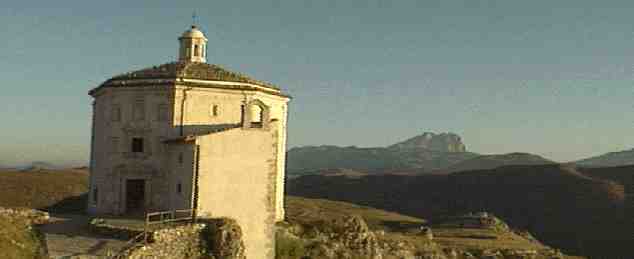
BIKING IN ABRUZZO

WHERE ARE WE? Situated almost in the center of the Italian peninsula only one hour away from Rome, Abruzzo it's one of Italy best kept secrets. Most of its economic life takes place on the coast facing the Adriatic Sea but its very heart lies among the many mountains ranges that run along its territory. Here you can find the highest peaks in the Apennines. Coast and mountains are fastened together by a green belt of gentle hills lined with olive trees and vineyards. Thanks to a foreseeing policy of land preservation now thirty percent of its territory is protected as National Park (4 right now) or wildlife reservation.
WHAT'S SO GOOD ABOUT BIKING IN ABRUZZO? A network of modern roads built over the last few years has taken the heavy traffic away from the most scenic routes. Here you can really ride free of traffic concerns about anywhere, but you don't have to worry about feeling alone since cycling has become widely popular in the region and repair shops can be easily found. Climate it's generally propitious to short-pants biking from April to October except in the higher mountains area where it's better having some warmer gear at hand even in the summer.

the road to Gran Sasso (2200 mt)
GOING VERTICAL? Do you ever heard about the famed Dolomitic stage in every Giro d'Italia? Well, if climbing is your bread and butter, you can live the same experience right here. For those with an absolute need to break a personal best there are also a couple of over 7000 ft. The Blockhaus in the Maiella mountains and Campo Imperatore in the park of the Gran Sasso mountain. The eastern side of the climb to the Blockhaus starts from the seaside in Francavilla ending up on the 2150 mt summit less than 50 km away. But it's the southern side, thru Roccamorice, 33 km with an elevation gain of 2000 mt, that earned a real bad reputation when, during an early stage at the '72 Giro d'Italia, Eddy Merckx, the Cannibal, had one of the worst day of his career, ending up humiliated by the featherweight Spaniard grimpeur Fuente that also snatched his pink jersey. That day many celebrated pros didn't make it under the time cut and they were excluded from the race. The Giro never ventured on that route again. Nonetheless challenging it's the climb to the 2200 mt of Campo Imperatore. Right beneath the Gran Sasso, the highest peak in the Apennines, the road ends right in front of the hotel where Mussolini was freed by the Nazi's Luftwaffe during World War II. No other ascent in Abruzzo reaches the 2000 mt but sometime reaching the top and find a stone-built village, refreshing at a fountain pouring icy water (forget about Gatorade and the like), sitting outside a bar in the piazza and briefly savouring the respectful attention by the locals can be even more rewarding.

GASTRONOMY.
Fuel is a primary need for leg powered engines. Food variety
ranges from fish plates on the coast to the wild herbs sauce of
the mountain. Carbo's injections take the form of succulent
dishes of homemade pastas. World famous De Cecco in Fara
S.Martino is only one of the many clever Abruzzesi pasta-makers.
The village of Villa S.Maria is home to one of Italy's most
ancient culinary school and cooks from Abruzzo can be found in
restaurants all over the world. Abruzzo is also the shepherds
land so meats and dairy products come from local cattle which
feed on mountain open pastures rich in aromatic herbs. Any area
it has his own traditional cheeses, meats, sweets and food
processing and easily at the next arrival, when sitting at the
dining table, you'll be intrigued by an entirely new scenario.
Wine and olive oil are widely produced and mostly by family-size
farms with great attention to safeguard their natural properties.
A visit to some of the most renowned producers it's a must. 
WHAT ELSE TO DO. Abruzzo, like the rest of Italy, it's incredibly rich of historical landmarks and monuments: castles, churches, fortified towns, roman and preroman ruins. Valuable works of art can be found not only in the museums but more often throughout the territory in the very same places the were originally designed to enrich. The ancient traditions of handicraft are still performed. Particularly worthy of mention are the lacemaking, the weaving of polychrome blankets and carpets, the artistic iron, gold, copper workmanship and the art of ceramics. Abruzzo's four National Parks and the many wildlife reservations are haven to bears, wolfes, wildcats and other wild animals. Hiking, birdwatching, rafting, skiing and any other activity not detrimental for nature it's possible.
For more info E-mail to abcycle@ats.it
